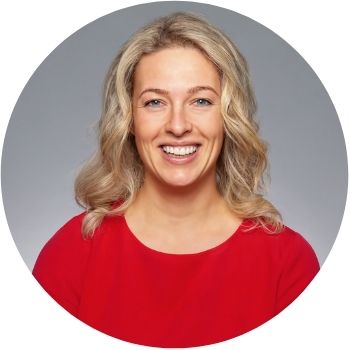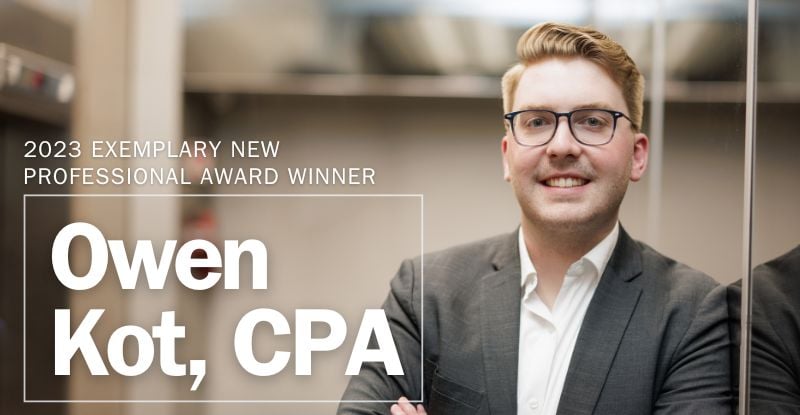.jpg?ext=.jpg)
Photo credit: lightsource/Depositphotos.com
Oxford Languages defines serendipity as “The occurrence and development of events by chance in a happy or beneficial way.” The trajectory of my career, my life, has been visited by these seemingly chance encounters. Late for an event and make a lasting first impression? Perhaps you start your day by missing your regular bus and end it laughing the night away.
I suggest planning what you can to leave space and energy to manifest magnificent moments and accomplishments. One way to do this is by planning your CPA PEP modules. Assuming you have decided on what and when to take your elective modules (if you haven’t, you can start by reading the first article in my series on Effective Elective Planning) it’s time to plot your path to Capstone and CFE success.
You can start by reading CPA Canada’s Professional Education Program Candidate Guide, specifically the section Capstone modules. There, a helpful figure summarizes the relationship between the Capstone modules and the CFE.

Figure: CPA Canada’s 2022 CPA Professional Education Program Candidate Guide, Page 7
It is strongly recommended that you consider Capstone 1 and Capstone 2, and the CFE as one integrated package and therefore take Capstone 1 and Capstone 2 immediately leading up to the CFE to ensure consistency of the cases. Alternatively, you need to wait to take Capstone 2 and CFE one year after your Capstone 1 session to be able to write the Day 1 Capstone 2 and Day 1 CFE based on your Capstone 1 case again.
By using this guidance and the CPAWSB module schedules, you can plan your Capstone and CFE route to ensure “your” Capstone 1 case will be available to practice in Capstone 2 and write at your CFE. That way, you won’t need to devote time to familiarize yourself with another Capstone 1 case.
CPAWSB has created a Capstone and CFE FAQ, another solid time-saving resource specific to CPAWSB PEP candidates. There, you will find answers to previous CPAWSB candidates' questions such as "What is Capstone 1?" and "What is a declarative elective, and where can I get more information?" which current and prospective CPA PEP candidates can benefit by reading our community's collective knowledge.
YouTuber Nathaniel Drew suggests organizing your life in such a way that invites serendipity. Deloitte Greenhouse Experience Director Kara Barnard plans sessions to facilitate collisions and purpose-driven serendipity. How will you organize what matters, including the Capstones and the CFE, to leave room for the occurrence and development of chance events in your life?
Cliché but true: timing is everything.
I suggest planning what you can to leave space and energy to manifest magnificent moments and accomplishments. One way to do this is by planning your CPA PEP modules. Assuming you have decided on what and when to take your elective modules (if you haven’t, you can start by reading the first article in my series on Effective Elective Planning) it’s time to plot your path to Capstone and CFE success.
You can start by reading CPA Canada’s Professional Education Program Candidate Guide, specifically the section Capstone modules. There, a helpful figure summarizes the relationship between the Capstone modules and the CFE.

Figure: CPA Canada’s 2022 CPA Professional Education Program Candidate Guide, Page 7
It is strongly recommended that you consider Capstone 1 and Capstone 2, and the CFE as one integrated package and therefore take Capstone 1 and Capstone 2 immediately leading up to the CFE to ensure consistency of the cases. Alternatively, you need to wait to take Capstone 2 and CFE one year after your Capstone 1 session to be able to write the Day 1 Capstone 2 and Day 1 CFE based on your Capstone 1 case again.
The following table summarizes why the above approach is recommended:
Possible routes |
Capstone-1 |
Capstone-2 |
CFE |
Implications |
| Route 1: Take Capstone 1 and 2 immediately leading up to the CFE. |
Capstone 1 case: Case A | Day 1 practice cases based on Case A (your Capstone 1 case) | Day 1 CFE case based on Case A (your Capstone 1 case) | Case A is consistent across Capstone 1, Capstone 2 and the CFE; therefore, this route is recommended. |
| Route 2: Take Capstone 1. Then, wait and do not take Capstone 2 immediately afterwards. |
Capstone 1 case: Case A | Day 1 practices cases based on Case B (not the same as your Capstone 1 case) | Day 1 CFE case based on Case A (your Capstone 1 case) | The Day 1 case in Capstone 2 is different from the cases in Capstone 1 and the CFE; therefore, this route is not recommended. |
By using this guidance and the CPAWSB module schedules, you can plan your Capstone and CFE route to ensure “your” Capstone 1 case will be available to practice in Capstone 2 and write at your CFE. That way, you won’t need to devote time to familiarize yourself with another Capstone 1 case.
CPAWSB has created a Capstone and CFE FAQ, another solid time-saving resource specific to CPAWSB PEP candidates. There, you will find answers to previous CPAWSB candidates' questions such as "What is Capstone 1?" and "What is a declarative elective, and where can I get more information?" which current and prospective CPA PEP candidates can benefit by reading our community's collective knowledge.
YouTuber Nathaniel Drew suggests organizing your life in such a way that invites serendipity. Deloitte Greenhouse Experience Director Kara Barnard plans sessions to facilitate collisions and purpose-driven serendipity. How will you organize what matters, including the Capstones and the CFE, to leave room for the occurrence and development of chance events in your life?
Cliché but true: timing is everything.
Do you have feedback on this post or a question you’d like answered by an experienced CPAWSB educator? Please contact your facilitator or send a question to the General Topic in the Candidate Discussion forum.

Samantha Taylor, PME, CPA, CA
Samantha Taylor, PME, CPA, CA, is an educator and lead policy advisor for CPAWSB and a Senior Instructor of accounting at Dalhousie University. She is on a mission to understand and enable learner efficacy while eliminating doldrums occasionally associated with accounting education. Read more of Sam’s posts at the CPAWSB blog.


.jpg?ext=.jpg)




